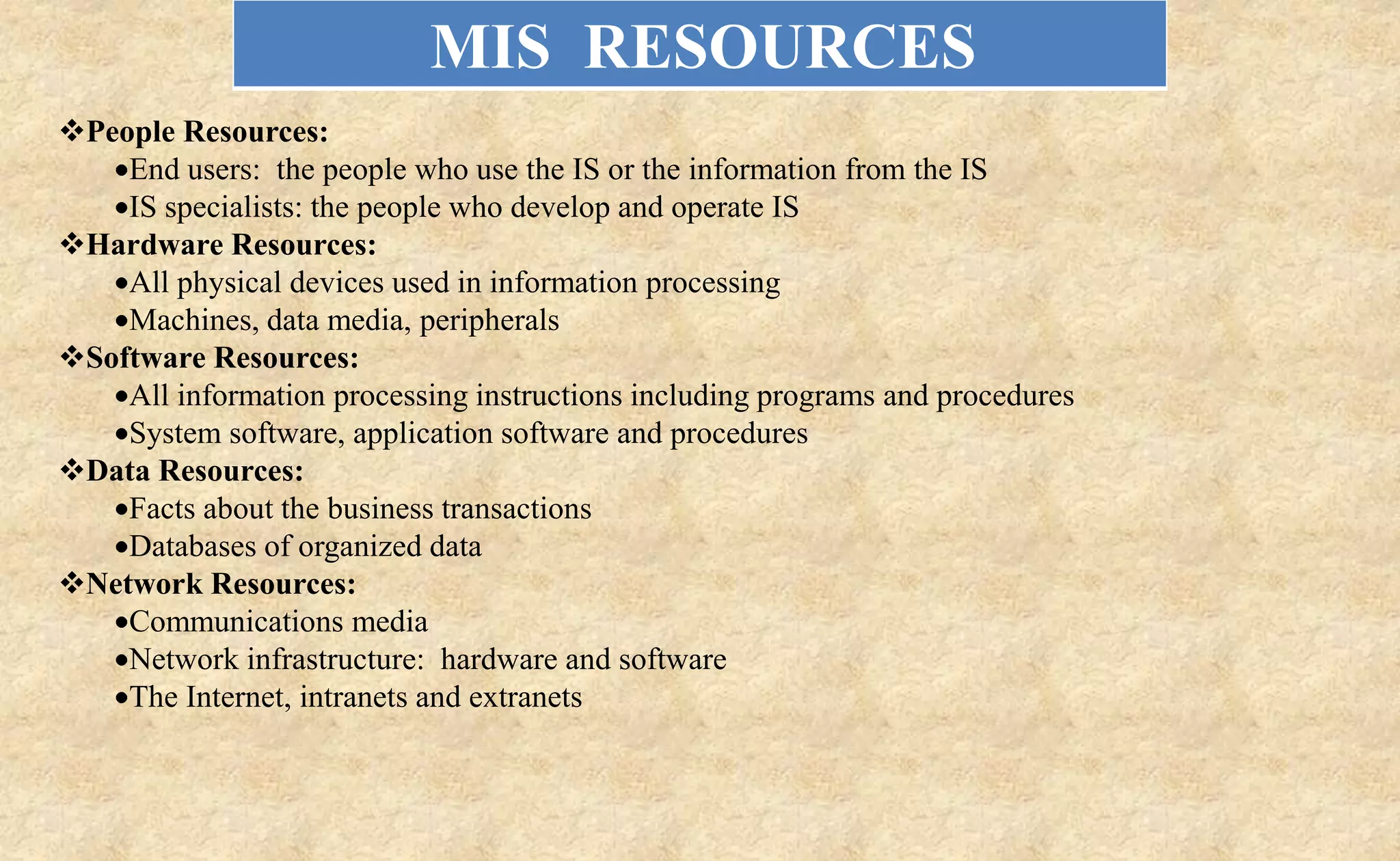The document presents information on a project presentation about applying a management information system (MIS) in the textile industry of Bangladesh. It discusses the objectives of the project which are to understand the concept of MIS, its features and functions, implementation process, scope of application in textile industries, and advantages and limitations. It also provides details about various aspects of developing and implementing an MIS like the resources, activities, development approaches, implementation steps, available software, and applications in areas like business, sales, production, quality, materials, finance, and human resources management.











































